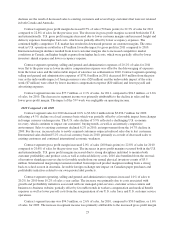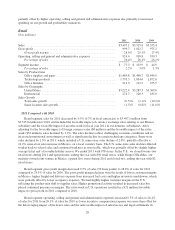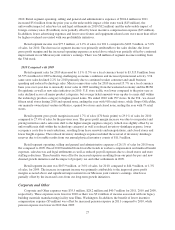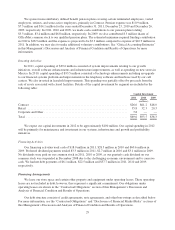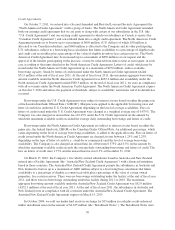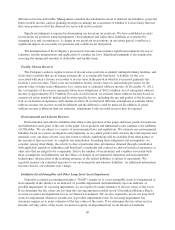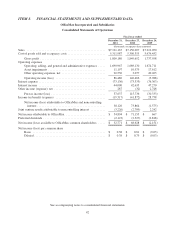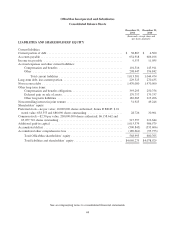OfficeMax 2011 Annual Report Download - page 67
Download and view the complete annual report
Please find page 67 of the 2011 OfficeMax annual report below. You can navigate through the pages in the report by either clicking on the pages listed below, or by using the keyword search tool below to find specific information within the annual report.securitized timber notes payable as recourse is limited to proceeds from the applicable pledged Installment Notes
receivable and underlying guarantees. The debt and receivables related to the timber notes have fixed interest
rates and are reflected in the tables below, along with the carry amounts and estimated fair values.
The estimated fair values of our other financial instruments, including cash and cash equivalents and
receivables are the same as their carrying values. Concentration of credit risks with respect to trade receivables is
limited due to the wide variety of vendors, customers and channels to and through which our products are
sourced and sold, as well as their dispersion across many geographic areas. In the fourth quarter of 2011, we
became aware of financial difficulties at one of our large Contract customers. We granted the customer extended
payment terms and in exchange are requesting a security interest in their assets and are implementing creditor
oversight provisions. The receivable from this customer was $27 million at December 31, 2011, and substantially
all of that balance has been collected to date. Based on our ongoing sales to this customer, we continue to carry
similar receivable balances, which we monitor closely.
Changes in foreign currency exchange rates expose us to financial market risk. We occasionally use
derivative financial instruments, such as forward exchange contracts, to manage our exposure associated with
commercial transactions and certain liabilities that are denominated in a currency other than the currency of the
operating unit entering into the underlying transaction. We generally do not enter into derivative instruments for
any other purpose. We do not speculate using derivative instruments.
During 2011, we entered into forward contracts in order to hedge our foreign currency exchange rate
exposure related to purchases of paper by our Canadian subsidiary in accordance with a paper supply contract
with Boise White Paper, L.L.C. (“Boise Paper”). Under the paper supply contract, our subsidiary is obligated to
purchase virtually of all its requirements for office paper from Boise Paper or its successor until December 2012,
at prices approximating market levels. In accordance with the paper supply contract, the purchase price in
Canadian dollars is indexed to the U.S. dollar up until the first business day of the month in which the purchase is
made. These forward contracts qualify as foreign currency cash flow hedges. The Company has determined the
hedges to be effective but does not anticipate entering any new transactions. The fair value associated with these
hedges is not material to our financial statements.
We were not a party to any material derivative financial instruments in 2011 or 2010.
35


